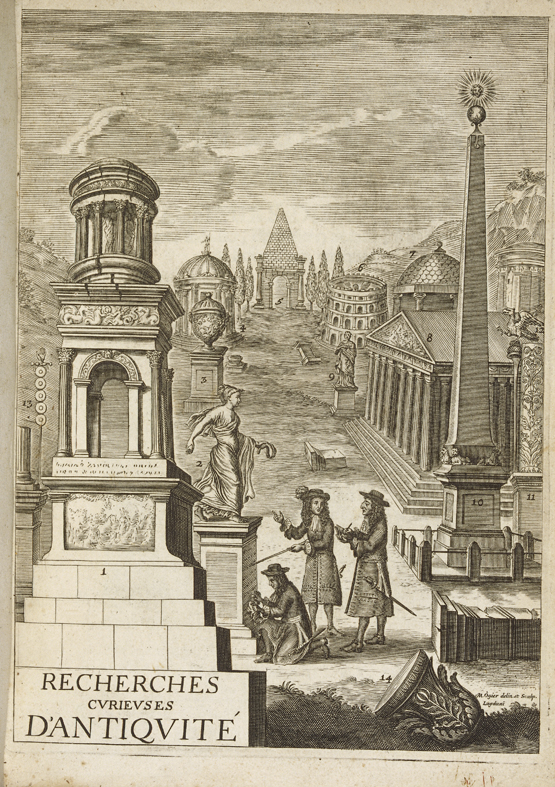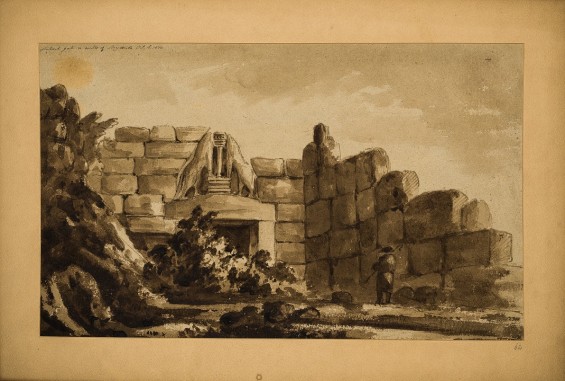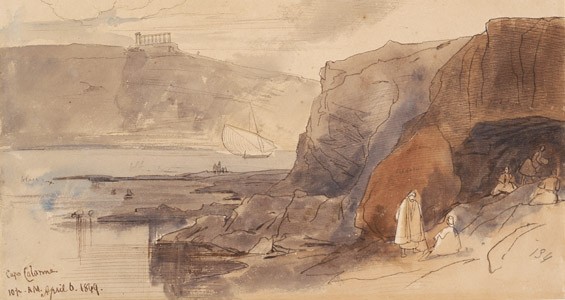Art and Archaeology

The archaeology of ancient Greece was a favorite subject for Joannes Gennadius, who acquired virtually all the great folio volumes of the 18th century: Stuart and Revett, The Antiquities of Athens (London, 1762-1816); the Ionian Antiquities of the Society of Dilettanti (London, 1769-1915); Robert Adam, Ruins of the Palace of the Emperor Diocletian at Spalato in Dalmatia (London, 1764); Richard Worsley’s Museum Worsleyanum . . . with views of places in the Levant (London, 1794-1803) - this is the author’s inscribed presentation copy to Lord Nelson, who gave it in turn to Lady Hamilton; and the first serious publication copy on Greek vases, Sir William Hamilton’s Collection of Etruscan, Greek, and Roman Antiquities (Naples, 1766-67), one of the most handsome books ever printed; the four volume set is bound in green morocco stamped with the arms of Louis XV.

Of the early 19th century at least three items should be noted: E. Q. Visconti’s Iconographie grecque (Paris, 1808), three mammoth volumes (60 cm.), the presentation copy to Napoleon, with his imperial arms stamped on the binding; James C. Murphy, The Arabian Antiquities of Spain (London, 1813), the author’s own copy including his original drawings, manuscript notes, and extra plates; and the Expedition scientifique de Morée (Paris, 1831-38), the complete set, presented by King Louis-Philippe to Sir Standish. Many of the later books and pamphlets, though less renowned, are often of considerable value, and hard to find elsewhere. Of particular importance are the watercolors and skecthes of famous English travelers such as William Haygarth, William Page, as well as the architects Thomas Hope & Charles Cockerell of the 18th century.

Watercolors of Edward Lear
Edward Lear is best known to the world as the author of such works as The Book of Nonsense, including the famous “Owl and the Pussycat,” and travel books. He was, however, by profession a landscape painter and the Gennadeion is fortunate to own two hundred of his Greek landscape drawings. His sketches and watercolours are prized by collectors and observers for their spontaneity and almost impressionistic quality. In 1929 a selection of 192 Lear sketches was offered to Joannes Gennadius, who persuaded the American School to purchase them. The cost was 25 English pounds, about 75 pence each! Ten years later the Library was able to add another thirteen sketches to the collection (at a considerably higher price, it may be noted).